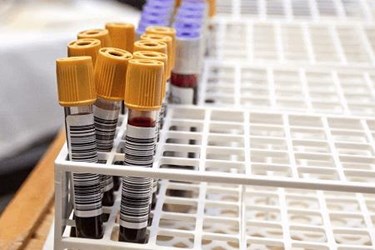Liquid Biopsy — "Powerful Tool" In Precision Lung Cancer Therapy, Study Shows

A new study suggests that liquid biopsies may yield more actionable data than results from genetic sequencing tests of tissue biopsies in patients with non-small cell lung cancer (NSCLC), especially as the disease progresses. Researchers from the University of Pennsylvania (Penn) also argue that serial testing with Guardant Health’s liquid biopsy allows clinicians to monitor cancer progression less-invasively and adjust therapies in real-time for more precise treatments.
Cancer cells’ DNA mutates over time, killing or compromising healthy tissue. Developing a diagnostic that can detect these mutations in cells circulating in a patient’s blood — which would allow clinicians to start treatments at a curable stage — has become the “holy grail” of cancer research.
An Illumina spinoff company called Grail plans to launch a suite of liquid biopsy technologies by 2019 and has said its resources and expertise will allow it to market the test for a lower cost than its competition. Swiss-based Roche recently received FDA approval for its liquid biopsy to detect the epidermal growth factor receptor (EGFR) gene mutation found in patients with NSCLC.
To establish the accuracy of a liquid biopsy diagnostic, researchers have been comparing results found in circulating tumor DNA (ctDNA) to those found with tissue biopsies, the current gold standard. Now, Penn researchers have produced evidence that ctDNA results from liquid biopsies developed by Guardant Health may be actionable on their own and may be preferable in cancers like NSCLC where tissue samples are difficult to obtain.
Erica Carpenter, director of the Circulating Tumor Material Laboratory at Penn, called the evidence a “paradigm shift,” adding that clinicians could get the same clinical response to therapies using ctDNA results, while causing less discomfort and risk to their patients.
A study published by Clinical Cancer Research looked at 102 patients with advanced cases of NSCLC. Half of the trial participants were unable to provide tissue samples and were treated based on ctDNA results alone. The other half were treated based on results from both sample types. Though both yielded the same results when tests were conducted at the same time, researchers noted that serial liquid biopsies were able to detect changes in mutations as the cancer began to resist therapy over time. Clinical decisions based on liquid biopsy “surveillance” over time were shown to improve patient outcomes.
“The ever-expanding number of targeted therapies for lung cancer patients has been accompanied by a need for diagnostics with real-time detection of therapeutically targetable mutations,” said Corey Langer, director of Thoracic Oncology in Penn’s Abramson Cancer Center and treating physician on the study. Langer added that tissue biopsies would likely remain an important part of initial diagnosis, but liquid biopsy was another “powerful tool” to determine the most appropriate cancer therapies.
U.S. Vice President Joe Biden recently led a Cancer Moonshot Summit in Washington, D.C., which put together task force aimed at doubling the rate of progress for cancer research. The Obama administration has pledged nearly $1 billion towards a task force, which is seeking better cooperation between cancer researchers, improved access to clinical trials, and a renewed focus on genomic data and precision therapies.
According to a Blue Ribbon Panel Report generated by the task force, “Being able to accurately predict when a patient may develop drug resistance could have profound implications for selecting appropriate cancer therapies for individual patients.”
